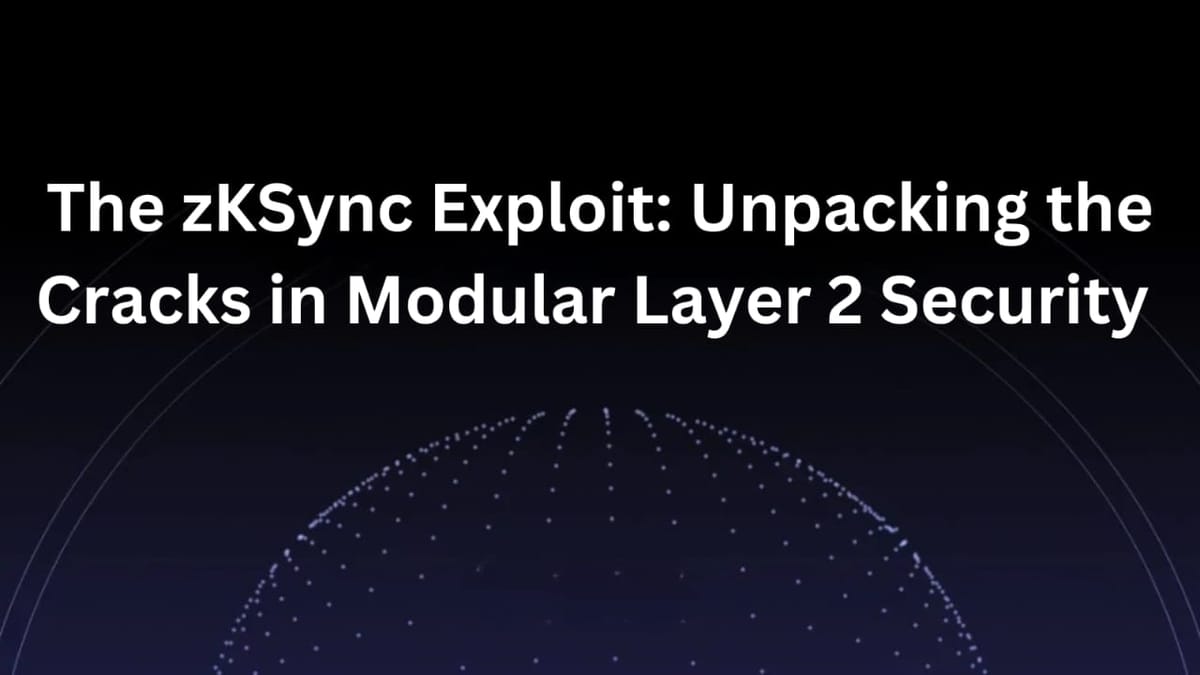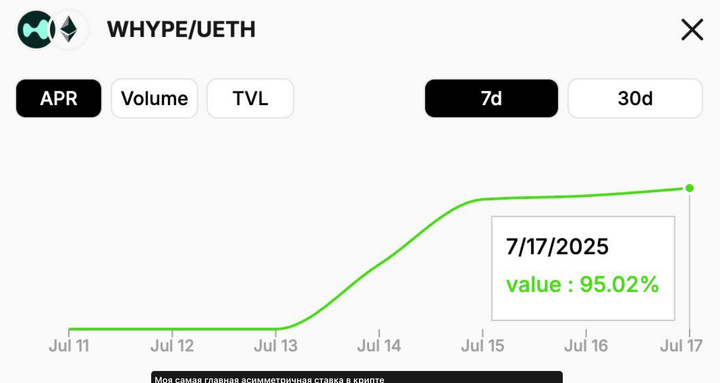The zkSync Exploit: Unpacking the Cracks in Modular Layer 2 Security

Introduction: A Blow to Trust in Modular Scaling
zkSync Era, the flagship Layer 2 built by Matter Labs, has long been heralded as a scalable and secure solution for Ethereum. But in recent weeks, an exploit shook that narrative. A project built atop zkSync—KiloEx—suffered a major security breach, raising eyebrows across the crypto space.
While zkSync itself wasn’t directly responsible for the exploit, the incident has cast a harsh light on the current modular security assumptions, especially within the broader zk-rollup ecosystem. As Ethereum Layer 2 solutions race for dominance, events like this force us to re-evaluate how safe and "modular" these platforms really are.
This deep dive will walk through the KiloEx incident, the layered architecture of zkSync, and the broader implications for DeFi and modular security moving forward.
1.0. Understanding the Exploit: What Happened at KiloEx? 🕵♂💣
On March 25th, KiloEx a decentralized perpetuals exchange built on zkSync—was drained of over $180,000 in assets. The attacker took advantage of a contract vulnerability that allowed them to manipulate prices through flashloan-based inflation. 💸
The root cause was a poorly written Oracle implementation in KiloEx’s contracts. The attacker exploited a logic bug that didn't properly validate time-weighted average prices, giving them the ability to trade against manipulated values and drain liquidity pools.
Key Observations:
- The exploit did not stem from a failure in zkSync’s consensus or rollup mechanism.
- The smart contracts were unaudited and lacked community oversight.
- zkSync's modular structure meant no native safeguards stopped the malicious activity.
So if zkSync wasn’t directly responsible, why is it being scrutinized?
2.0. Layer 2 ≠ Infallible: Rethinking the Security Model 🛡⚠
zkSync uses a modular architecture: the rollup provides the base for data availability and settlement, while projects build decentralized apps on top. This modularity enables faster innovation—but it also pushes security responsibility onto the developers of individual apps.
This opens up a tough truth:
Layer 2s can be secure at the base layer, but insecure in practice due to app-level failures.
The situation reveals a security coordination gap. Since smart contracts live in application space and are mostly unaudited, any failure reflects indirectly on the rollup. This isn’t exclusive to zkSync—Optimism, Arbitrum, Base, and others face the same architecture dilemma. ⚙
3.0. Decentralization vs. Security: A Balancing Act ⚖🔥
In modular ecosystems like zkSync, developers enjoy more freedom—but with that freedom comes a lack of default safeguards.
Unlike monolithic chains like Solana where composability and audits are more centralized, zkSync’s model:
- Offers flexibility at the expense of oversight
- Encourages innovation but not uniform security
- Prioritizes speed to market, leaving critical checks behind
The KiloEx situation is a stark reminder that:
- Audits must be enforced or incentivized
- Rollups may need base-layer red flags or whitelists
- Users are at the mercy of dev diligence
Modular security ≠ assumed security. Without cohesive standards, exploits are a ticking time bomb.
4.0. How Did the Community React? 🗣📉
The exploit prompted swift action on Crypto Twitter (CT). Analysts and devs highlighted not just the oracle flaw, but also zkSync’s lack of app-layer guardrails.
Some hot takes:
- “zkSync should sandbox unaudited contracts.”
- “This is a wake-up call for all L2 ecosystems.”
- “We need shared security layers, not fragmented chaos.”
The community response emphasized shared responsibility. While zkSync isn’t solely to blame, it holds a unique position to help foster best practices and ensure developers follow a baseline security model.
5.0. The Bigger Picture: Can zkSync (and L2s) Be Secure Enough? 🧩🔐
The modular thesis hinges on composability, rapid development, and shared infrastructure. But these benefits don’t come without risks. The exploit has rekindled an old debate in Ethereum circles:
Should Layer 2s stay neutral, or intervene for the sake of ecosystem security?
Paths forward might include:
- Creating zkSync-native contract auditing programs 🧪
- Using ZKPs to verify contract logic and compliance
- Implementing an optional but encouraged app registry (with flags and trust scores)
Other ideas being discussed involve bringing “firewalls” or “app insurance” modules into the rollup itself without compromising decentralization.
Conclusion: Trust, But Verify (Everything) 🔍🧱
The zkSync exploit didn’t break the rollup but it cracked open the illusion that modular L2s are inherently safe just because the base layer is sound. As more DeFi projects launch on zk-rollups, we’ll see growing pains, and possibly more high-profile failures.
What this teaches us:
- Developers must own the full security stack
- Rollups need to rethink their passive posture
- Users must approach L2 dApps with the same caution they would on Ethereum mainnet
If zkSync, and modular chains in general, aim to fulfill the promise of secure, scalable DeFi—they’ll need to evolve beyond just zero-knowledge proofs and transaction speed.
They must start embedding trust frameworks, developer incentives, and user safety nets right into the ecosystem’s DNA. Because in a modular world, composability without responsibility is a recipe for disaster. ⚠
Are you ready to be part Mitosis Community?



Comments ()